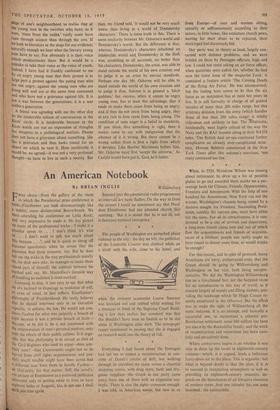Everything I had heard about the Pentagon had led me
to expect a reconstruction in con- crete of Dante's circles of hell; but walking through its corridors we came across a cheerful shopping centre, with drug store, bank and dry- goods suppliers—the Greek in our party came away froni one of them with an expensive um- brella. There is also the sight—common enough, I was told, in American towns, but new to us
from Europe—of men and women sitting, casually, or selfconsciously according to their nature, in little boxes, like miniature church pews, waiting for their shoes to be repaired, their stockinged feet decorously hid.
Our party was, in theory at least, largely con- cerned with defence • problems, and we were briefed on them by Pentagon officials, high and low. I could not resist asking an air force officer, when questions were called for, whether he had seen the latest issue of the magazine Look; it contained a feature article 'The Coming Death of the flying Air Force.' He was unconcerned; but the feeling here seems to be that the air force as an institution has at most ten years to live. It is still formally in charge of all guided missiles of more than 200 miles range, but this arbitrary division from the army (which handles those of less than 200 miles range) is mildly ridiculous and unlikely to last. The r'mericans, incidentally, were highly critical of the way the Navy and the RAF bumble along in their NATO roles, 'The British dual air-sea command further complicates an already over-complicated struc- ture,' Hanson Baldwin commented in the New York Times after this autumn's exercises; `too many command too few.'


































 Previous page
Previous page